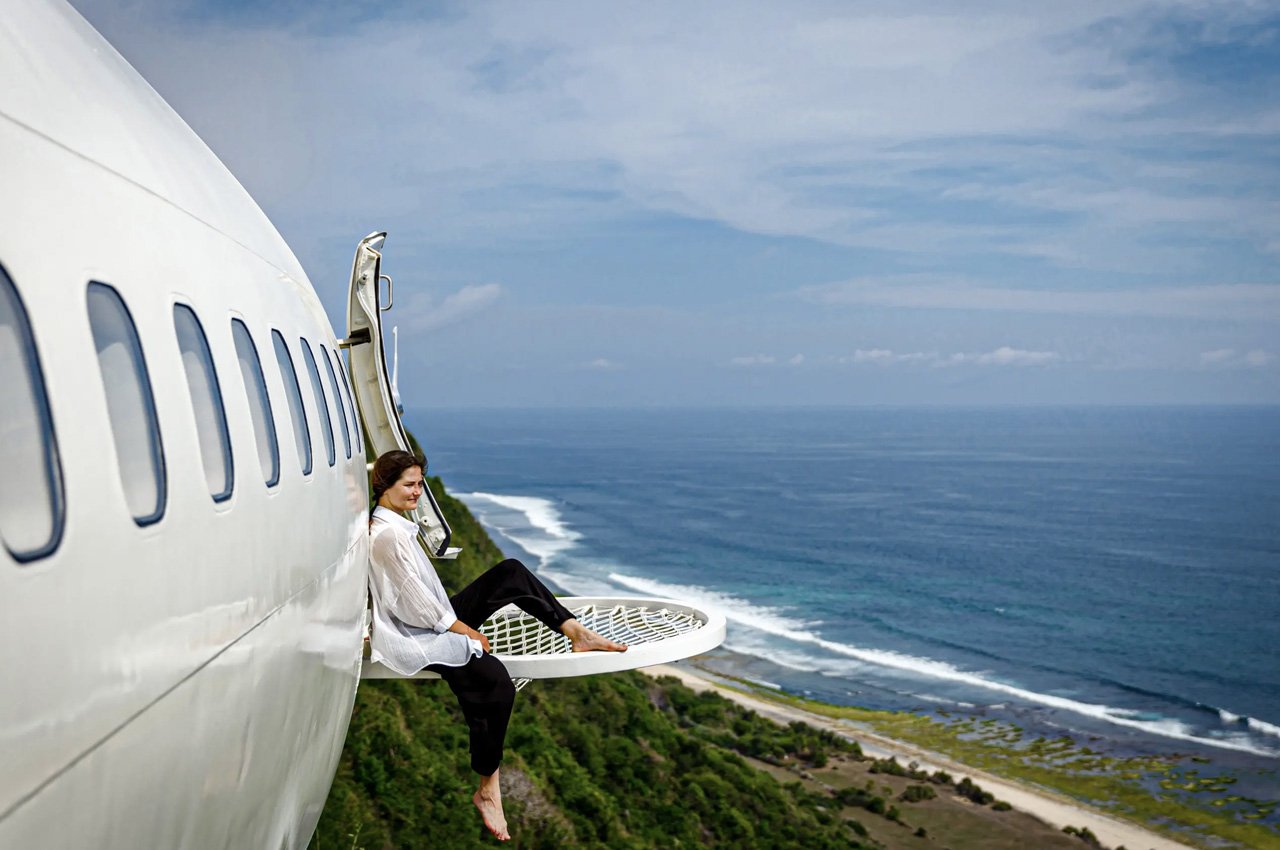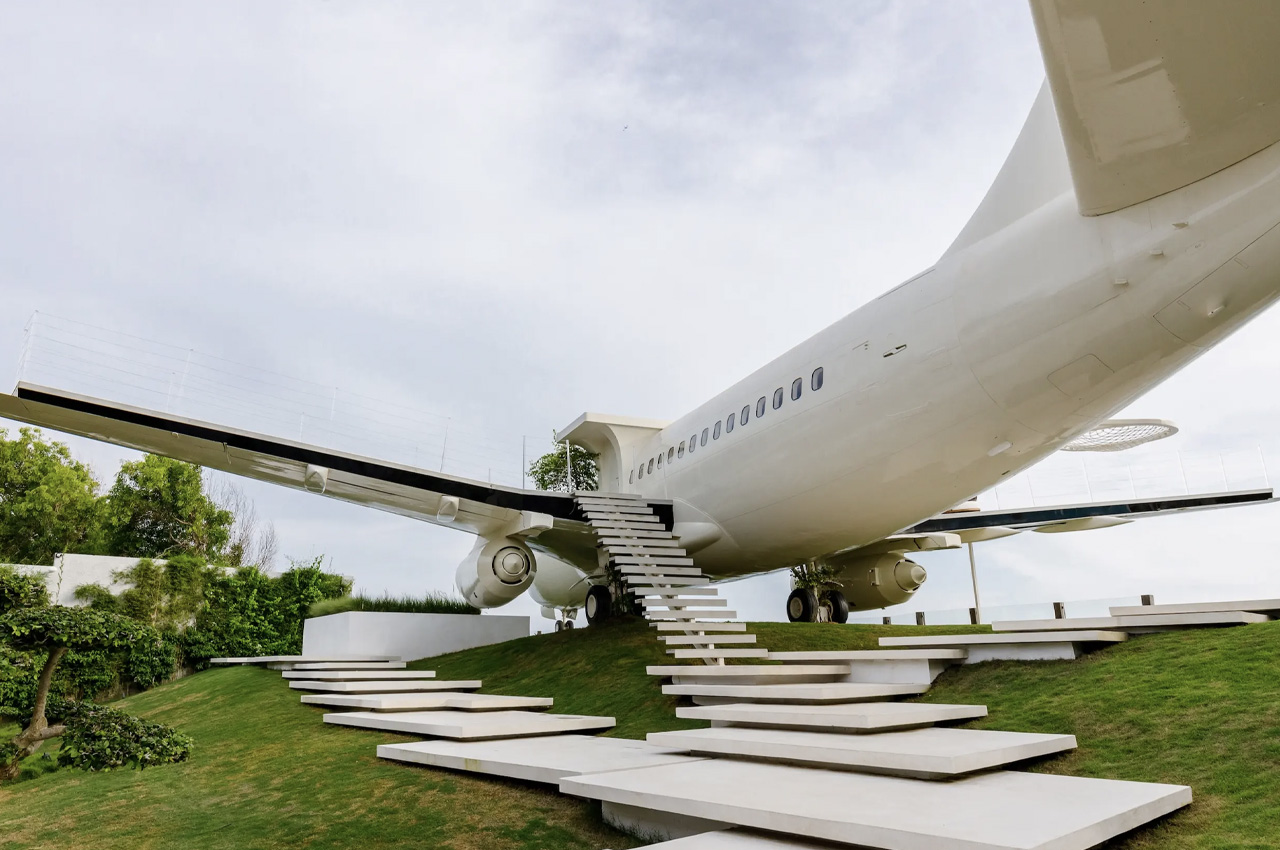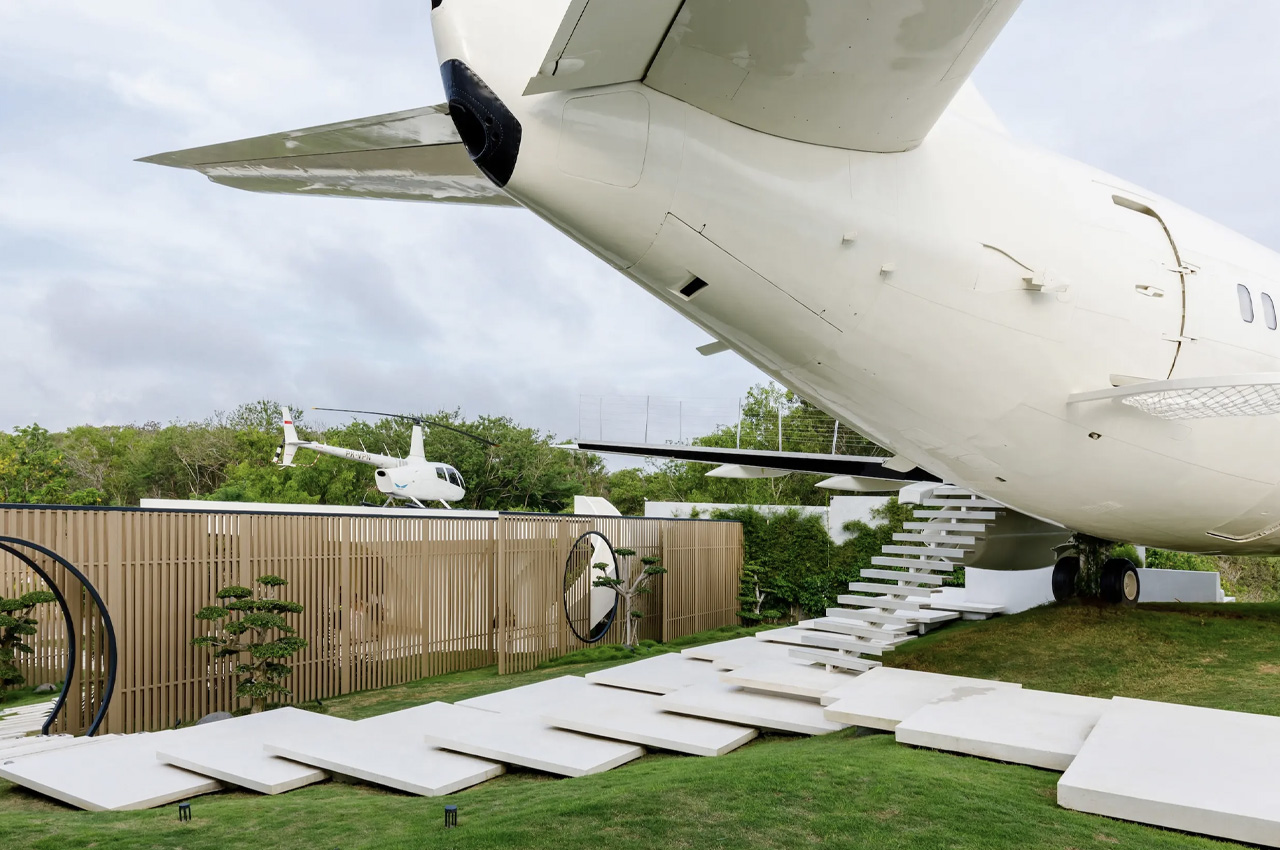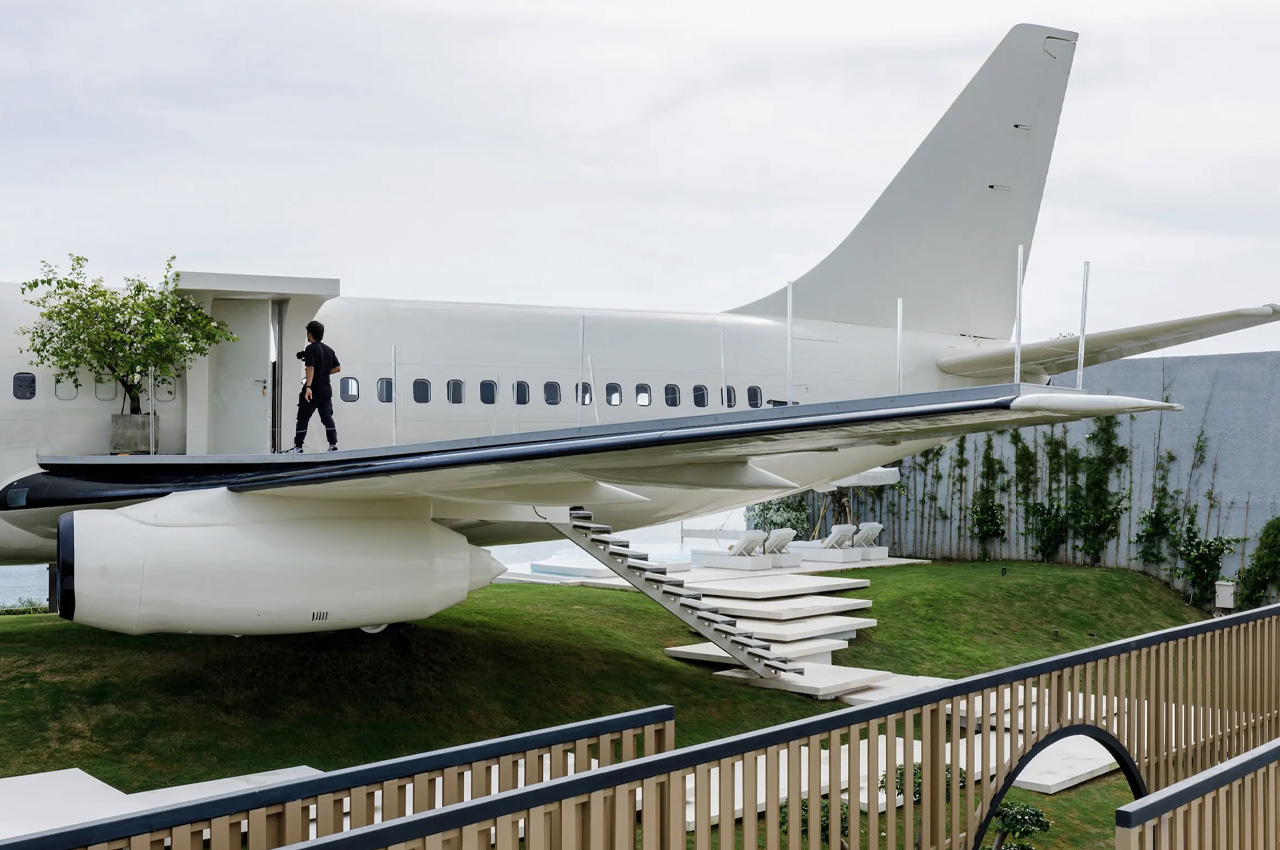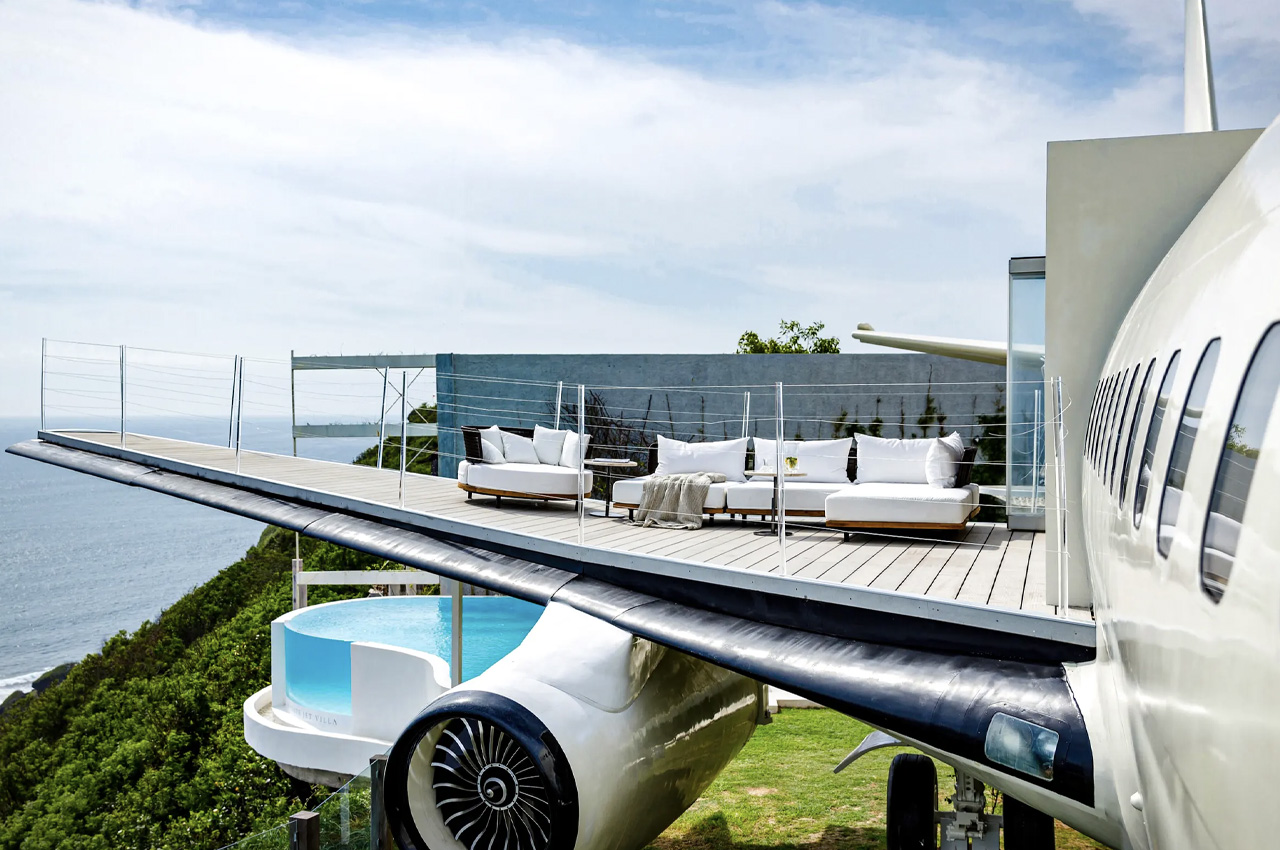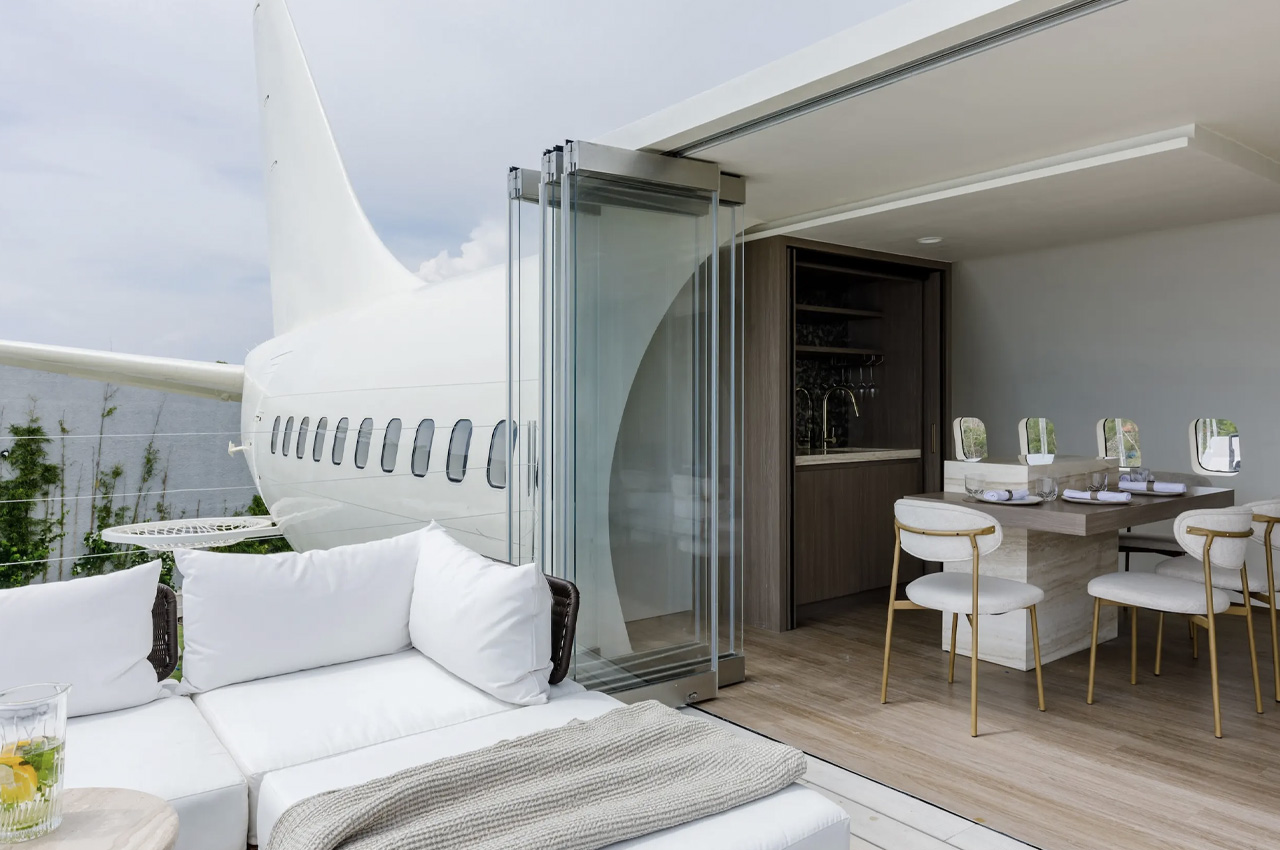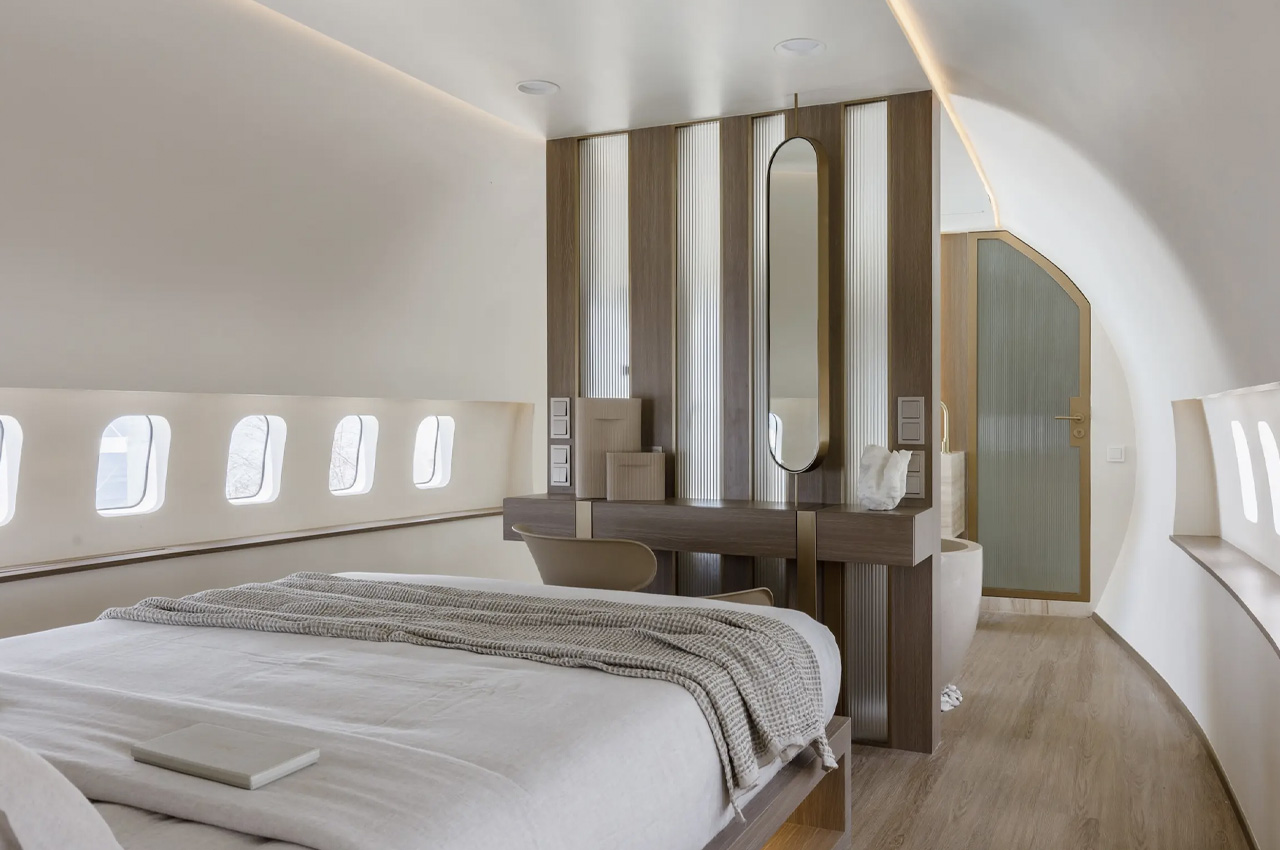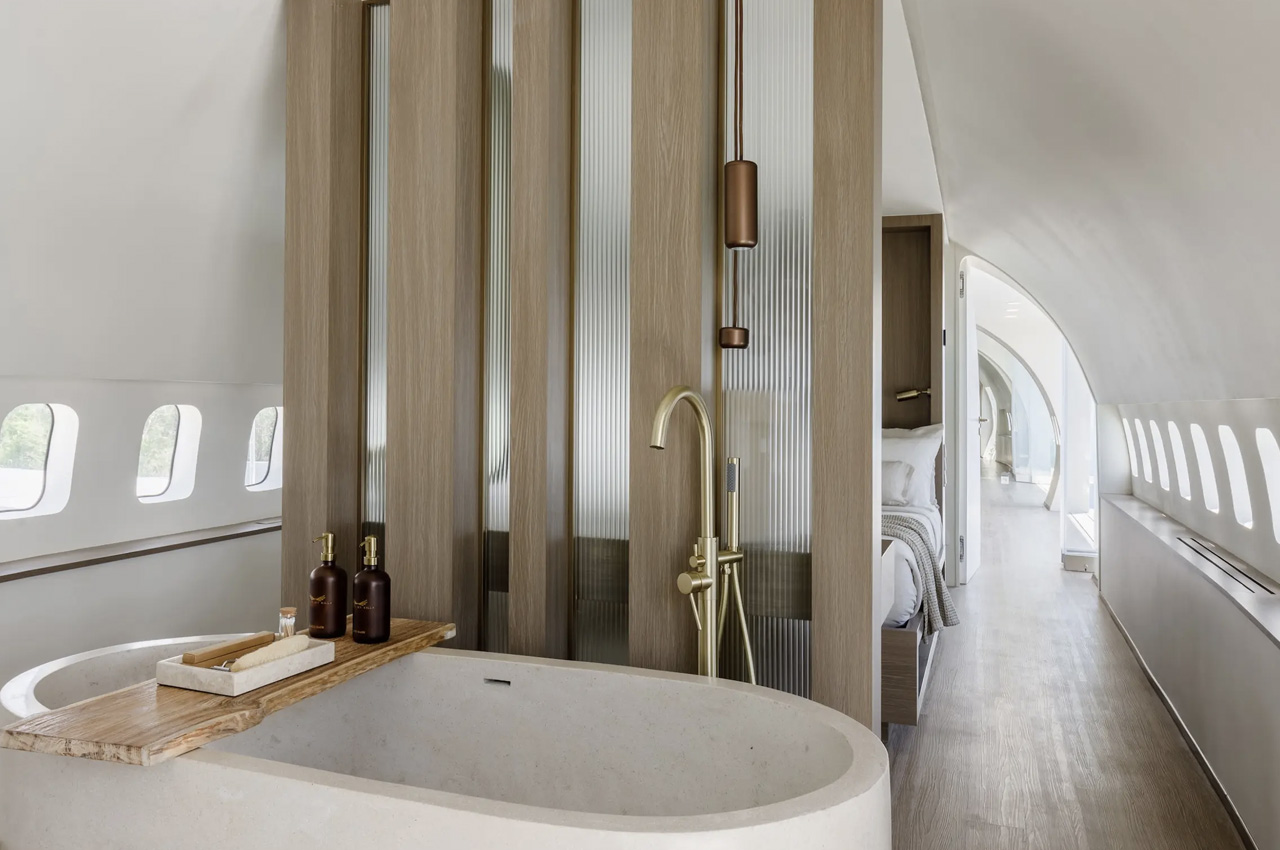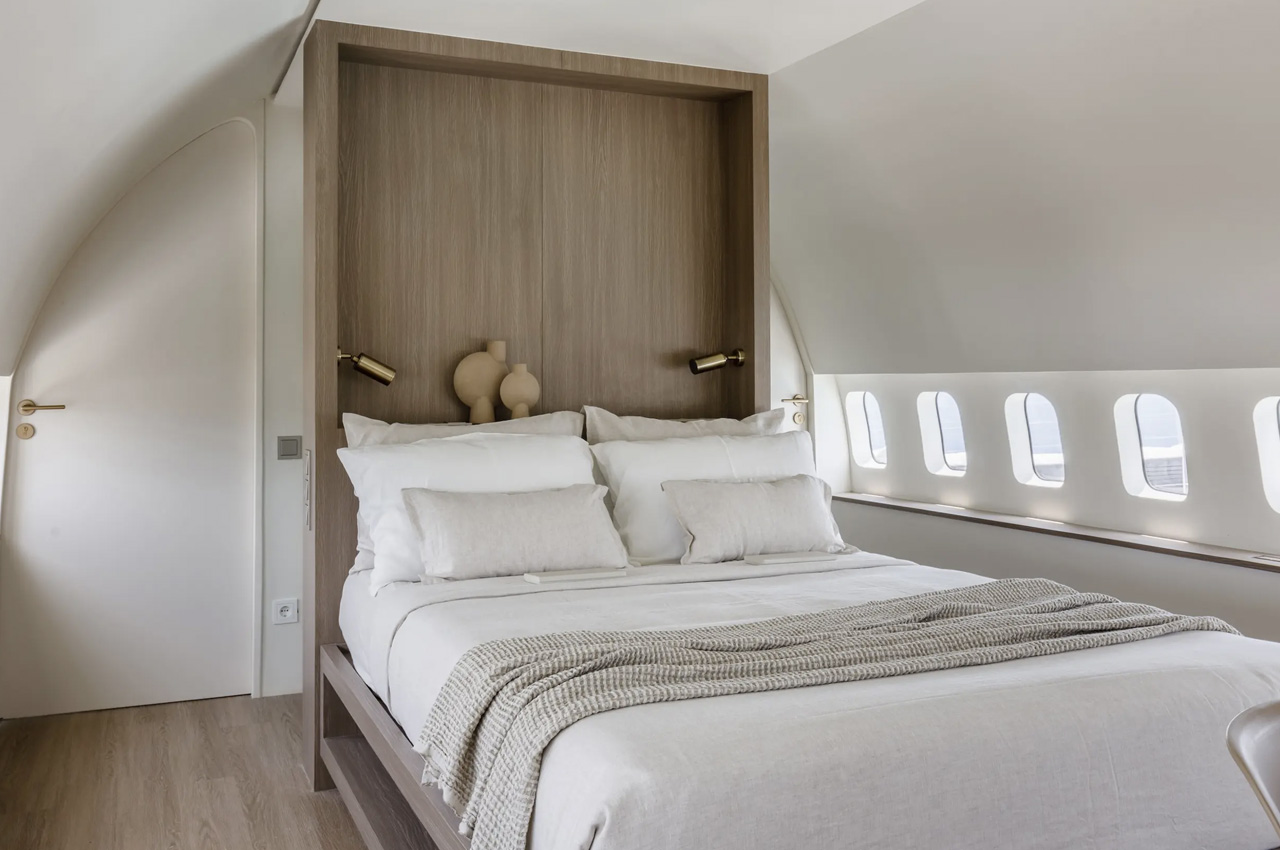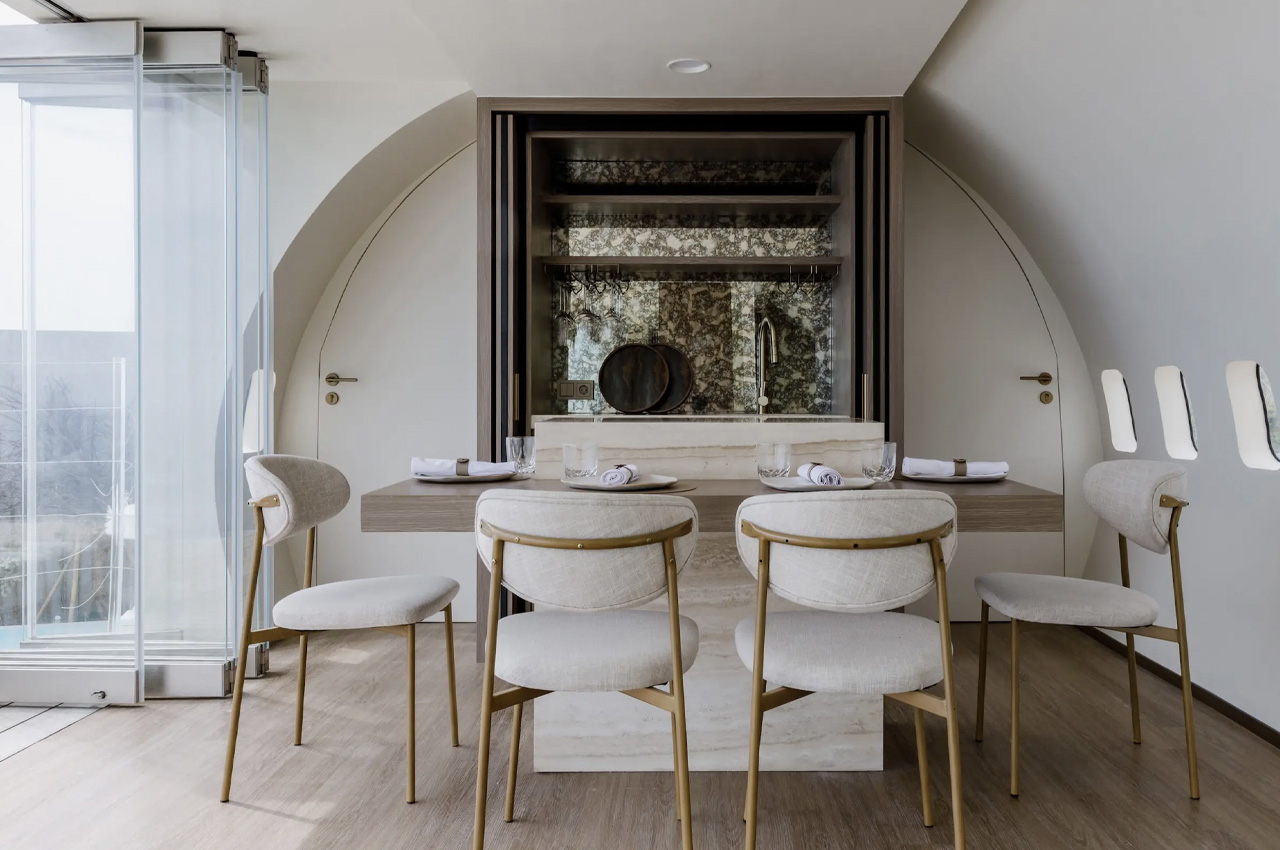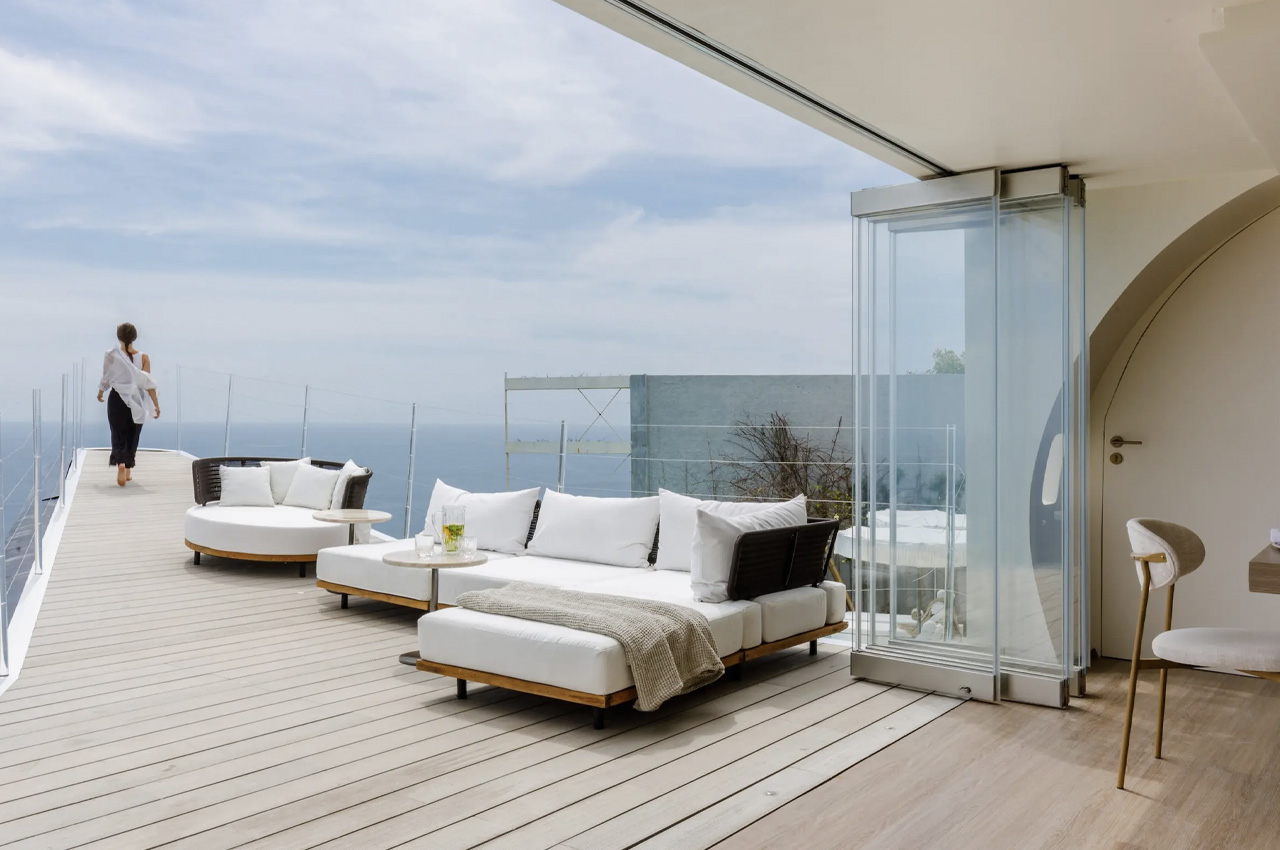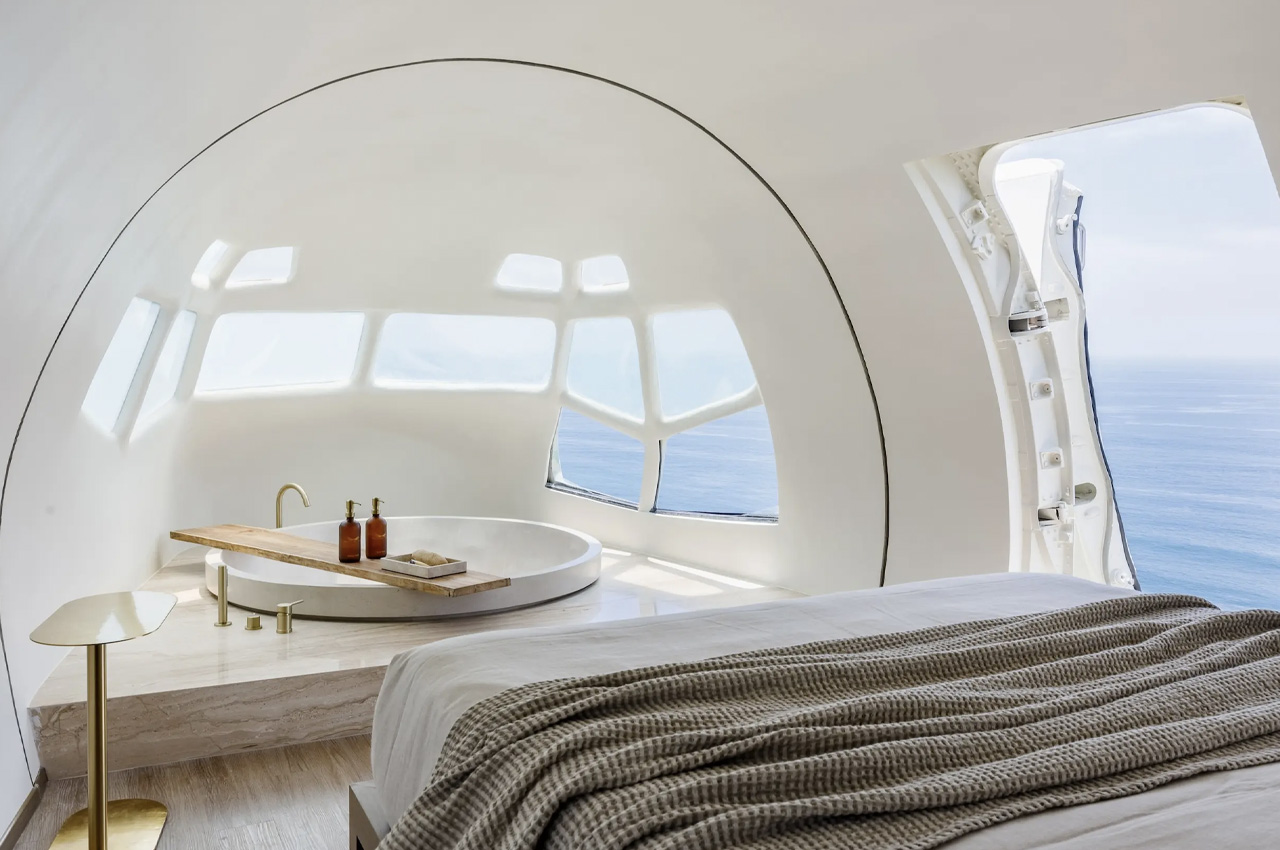
PriestmanGoode’s collaboration with Korean Air has led to a remarkable transformation of the cabin interiors for the airline’s 787-9 and 787-10 aircraft, seamlessly blending traditional Korean aesthetics with modern luxury. The project, initiated in 2018, brings a sophisticated, contemporary vision that honors Korean heritage while ensuring passenger comfort and modernity.
Designer: PriestmanGoode

Korean Air Business Class
The business class cabin features bespoke Collins Horizon Business Class seats with high privacy walls, 24-inch monitors, Bluetooth headphones, USB-C ports, and a full drop-down screen between seats. These features cater to modern travelers’ needs for privacy, connectivity, and convenience. The seats convert into double beds in the middle section, enhancing comfort for long-haul flights.

Korean Air Business Class – Middle section converts into bed
Rich textures brushed finishes, and intricate patterns inspired by traditional Korean textile art add a luxurious and unique cultural layer to the design. Patterns like Jogakbo patchwork and linear dynamic structures provide depth and character, ensuring a cohesive design language.

Luxury materials, such as rich, dark tones combined with soft, tactile fabrics, create a sense of sophistication and comfort. Detailed stitching and fabric choices reflect traditional Korean art, while brushed metal finishes and high-quality plastics ensure a premium feel and durability. The cabin layout maximizes privacy and personal space, catering to solo travelers and pairs, enhancing the overall passenger experience, and underscoring the focus on providing a state-of-the-art experience.


The economy class reflects a thoughtful integration of cultural and contemporary elements. The seats are upholstered in vibrant fabrics inspired by Hanbok saekdong, showcasing Korea’s cultural diversity. The color palette in economy class blends dark and light neutrals with bursts of color, creating a visually pleasing and comfortable environment. The ergonomic design ensures passenger comfort, while the aesthetic choices provide a cohesive and elegant look.

Korean Air Economy Class
The design process involved meticulous selection of materials and patterns. Each element, from geometric patterns inspired by Jogakbo patchwork to linear dynamic structures, has been thoughtfully integrated to enhance the passenger experience. High-quality materials ensure durability, while the design is timeless, promising longevity and continued appeal. The pattern development and material selection reveal a rigorous process where traditional Korean motifs were reimagined in a modern context. Custom patterns and textures developed by PriestmanGoode’s Color, Material, and Finish team, including those inspired by Jogakbo and Hanbok, are seamlessly incorporated into the cabin’s interiors.

Luxury materials and textures are evident throughout the cabins. Rich, dark tones combined with soft, tactile fabrics create a sense of sophistication and comfort in business class, while vibrant, multicolored fabrics bring a lively yet refined ambiance to economy class. The cabin lighting complements the color scheme, creating a warm and inviting atmosphere. The overall layout ensures easy movement and accessibility, with thoughtful placement of seats and aisles.

Each swatch of fabric, every thread, and the choice of colors reflect a deep respect for Korean heritage and a commitment to quality. The collaboration between PriestmanGoode’s design team and Korean Air has resulted in cabin interiors that are visually stunning and functionally superior. Attention to detail in every design aspect ensures passengers have a comfortable and luxurious experience.

PriestmanGoode’s use of materials draws inspiration from luxury automotive and domestic settings, ensuring both durability and elegance. The layering of rich textures, brushed finishes, and pressed fabric patterns creates a sophisticated and timeless atmosphere in the cabins. The meticulous attention to detail in business and economy class underscores the consultancy’s ability to innovate while respecting cultural nuances.

Overall, the redesigned cabins demonstrate Korean Air’s commitment to providing a high-quality passenger experience. The new interiors promise longevity and continued appeal with a design that honors tradition while embracing modernity. This project by PriestmanGoode highlights the importance of blending cultural heritage with contemporary design principles, creating a luxurious and culturally resonant flying experience for Korean Air passengers. The result is a cabin interior that is both functional and beautiful, offering a unique and memorable experience for all who fly with Korean Air.
The post Korean Air’s 787 Dreamliner: Modern Luxury Meets Traditional Korean Design first appeared on Yanko Design.
